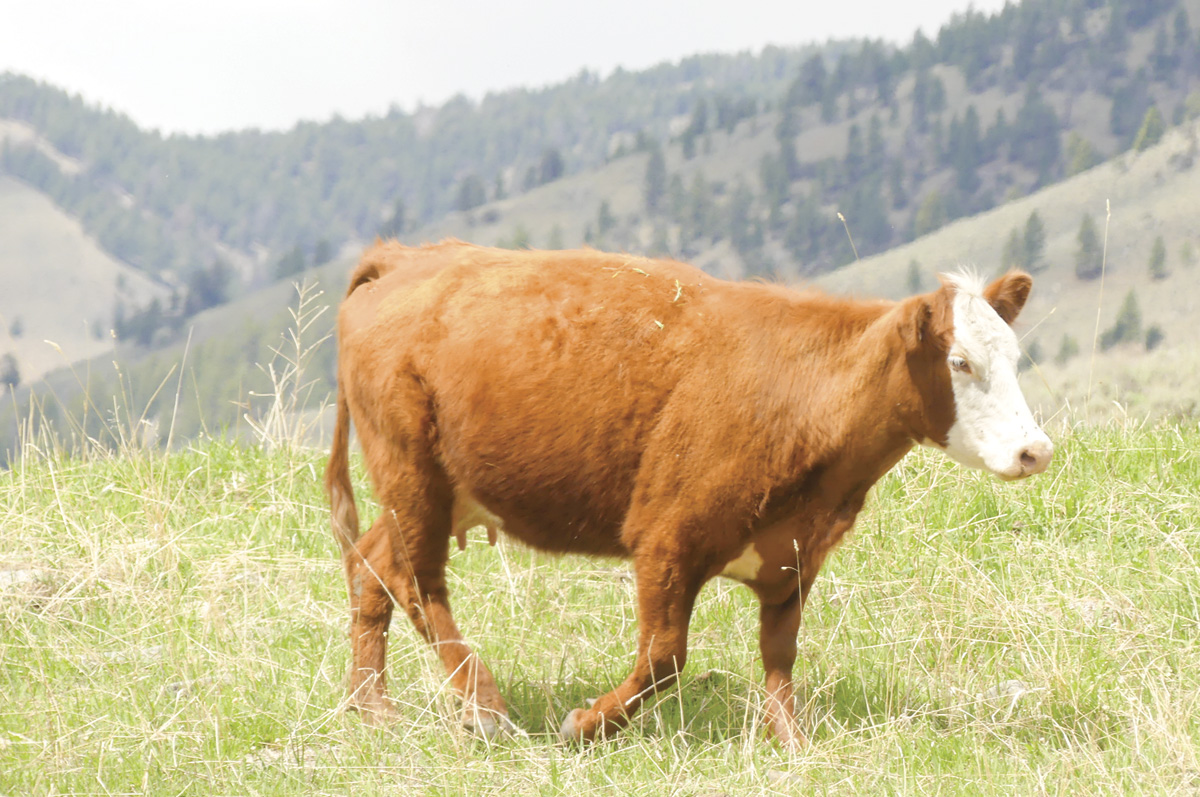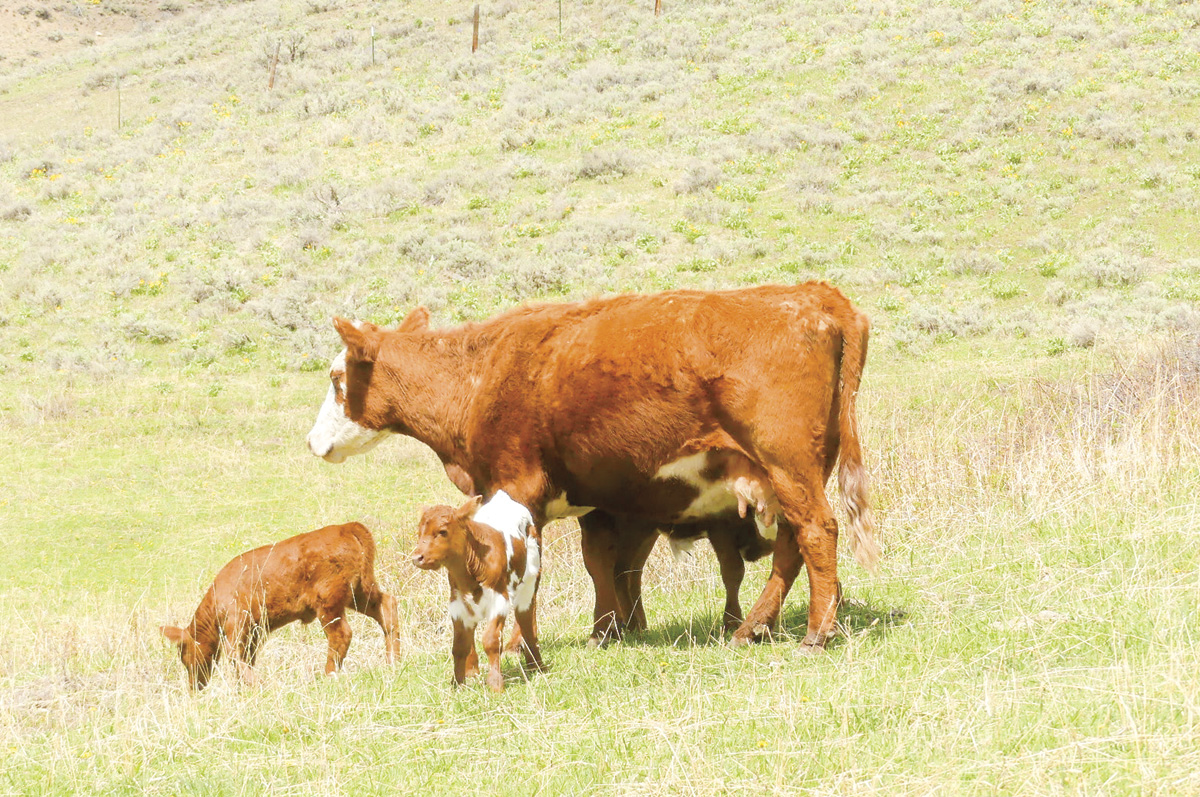Larger cows and their calves’ heavier weaning weights may not bring profits to the operation. How do these cattle impact productivity, and what changes can beef producers make to improve profitability?
Jim Sprinkle, an extension beef specialist with the University of Idaho, reports Charolais, Simmental and other European breeds were some of the largest cattle 30 years ago. Today, British cattle weights have caught up to the Continental breeds. In 1990, the average cow weighed around 1,100 pounds. Today, cows are pushing 1,400 pounds.
Because ranchers are paid on weaning weights, the beef industry has been selectively breeding for heavier calves for three decades. Seedstock producers develop heavier cattle because commercial operators demand robust bulls with higher weaning weight expected progeny differences (EPDs).
As weaning weights increase, so do cow size and milk production. Heavier-milking cows have to graze 30 to 50 minutes longer daily to maintain bodyweight when at peak milk production 50 to 60 days after giving birth. These cattle develop grazing fatigue, losing body condition (which can extend the breeding season another month) when grazing in more arid environments. If they calve in March, they will calve in April the following year. Eventually, they leave the herd because they miss the yearly calving interval.
“These larger cows and calves do well on irrigated pastures,” Sprinkle explains. “However, ranchers have difficulty supporting these cattle with Western rangeland forage production. Reproduction suffers, and 85 percent breedup in a cow herd weaning 600-pound calves is much less profitable than a 95 percent crop of 550-pound calves.”
Studies show profitability of lower weaning weights
Ideally, producers aim for a dam to wean a calf that is 50% of her mature weight. This is easier to achieve with 1,100- to 1,200-pound cows.
“Research conducted by John Hall at the University of Idaho shows a 1,300-pound cow weans calves at 45 percent of her weight,” Sprinkle explains. “The weaning weight of a calf from a 1,400-pound cow is 41 percent to 42 percent; a calf’s weaning weight from a 1,500-pound cow is 37 percent.”

Because Western forage supports moderate-sized cows, Western ranchers who raise those cattle spend less on supplemental feed, resulting in as much as $10,000 in additional annual income. Photo provided by Jim Sprinkle.
Hall’s investigation also compared 1,100-pound cows to 1,300-pound females on the same amount of pasture. The pasture supported 100 1,300-pound cows compared to 119 1,100-pound cows. Lower feed expenses for lighter cattle resulted in a $10,000 increase in annual income. Researchers at Oklahoma State University found that for every 100 pounds of extra cow weight, the rancher spent $42 annually for maintenance.
“If you look at weaning weights produced by larger cows, you don’t get enough to pay the difference,” Sprinkle observes. “I took a frame score of 6, which is a 1,250-pound cow. To increase her mature weight about 100 pounds, you get around a 9- to 10-pound increased weaning weight. If you take the calf sale price of 2 dollars 40 cents a pound, you’re looking at 24 dollars. Compared to 42 dollars, that’s a loss of 18 dollars per head during the best of times. In average years, producers lose about 23 dollars in revenue for that extra 100 pounds of cow weight.”
To reverse this trend, producers need to reduce milk production and cow size. Sprinkle recommends ranchers select moderate-sized females as replacements. A frame score is one tool to check hip heights. “If you held the hip height for 7-month-old heifers at 43 to 45 inches, their mature cow frame scores would be 5 or 6,” Sprinkle says. “Their average mature weight would be 1,175 to 1,250 pounds with a body condition score (BCS) of 5.”
All breed associations have excellent genetic predictions through EPDs. Sprinkle suggests selecting bulls with lower milk EPD scores to change the herd. For most Western rangeland operations, a milk EPD of +20 pounds or less works well. An American Angus bull with a milk EPD of +15 falls in the lowest 5% of the breed.
Frame scores, height, weight and body condition
Texas A&M AgriLife Extension beef cattle specialist Jason Smith says frame scores are measurements based on an animal’s hip height, adjusted for age and gender. It is an indicator of the animal’s mature weight.
“Commercial operators haven’t widely adopted frame scores,” Smith explains. “Seedstock producers commonly use them to measure bulls and heifers at weaning and yearling ages for data reports.”
Measuring hip height requires a measuring stick, which can be challenging to use accurately in a chute. Another option is a drop-down hip height measurement system in the chute, which is easier to handle. According to Smith, a frame score is an imperfect measurement. It does not account for other physical aspects, such as the animal’s muscularity, width or length.

A moderate-sized cow easily weans a calf that is 50% of her mature weight. Studies show that 85% breedup in a cow herd weaning 600-pound calves is less profitable than a 95% crop of 550-pound calves. Photo provided by Jim Sprinkle.
“Researchers need to identify other factors to be included in frame score calculations to improve our ability to predict mature weights of animals at a young age,” Smith argues. “I’m confident we can do it; we just don’t know what the other elements are yet. I encourage producers who want to moderate cow size to consider frame score, weight and body condition. We can weigh cattle with scales, a justifiable ranch expense. Considering weight and condition gives us more power to make genetic progress toward moderating cow size.”
Smith says the trend toward larger, heavier cattle is problematic.
“Producers do not need tiny cows, but rather those that are an optimum size to meet the beef industry’s requirements,” he says. “They should be animals we can maintain at the ranch level. There is an optimal balance. I encourage producers to discover that optimum for their operation.”
The importance of pounds per acre
Kit Pharo started ranching in 1985 near Cheyenne Wells, Colorado. His seedstock operation produces Angus, Red Angus, polled Hereford and composite bulls. He develops bulls on grass in Colorado, Missouri, Montana, Nebraska and Texas. Adapted to their environments, they readily perform well in those states.
Realizing that increasing weaning weights did not increase profits, Pharo analyzed his cattle operation.
“My focus is not to produce little cows but to produce profit and help other ranchers produce revenue,” Pharo says. “That’s not done by increasing individual weaning weights but by increasing pounds per acre instead of pounds per cow.”
To increase profit per acre, Pharo runs three moderate cows for the same feed or forage it takes for two larger females. Three 1,200-pound dams easily wean a higher percentage of their weight, resulting in yearly production per acre per ranch, well over what it would be with larger females.
“Some 1,200-pound cows are 8 inches taller than other 1,200-pound cows,” Pharo explains. “A 1,200-pound cow can be tall, thin and open, or she can be short, thick, fat and bred. Today, all of our cattle have a frame score of 3 to 4.”
From weaning on, Pharo treats heifers like he does his cows. Grazing on grass through the winter, cows and heifers have a 45-day breeding season to calve in May. Pharo sells all open cows and heifers.
“When most ranchers look at their cows and realize they’re too big, eat too much and aren’t making money, they may decide to sell the herd and buy new cows,” Pharo observes. “I discourage that. The only way to change an existing herd is through herd sires. In five years, a producer can have a complete transformation from cows that are too tall to cows that are just right. I emphasize pounds per acre and low maintenance requirements.”








